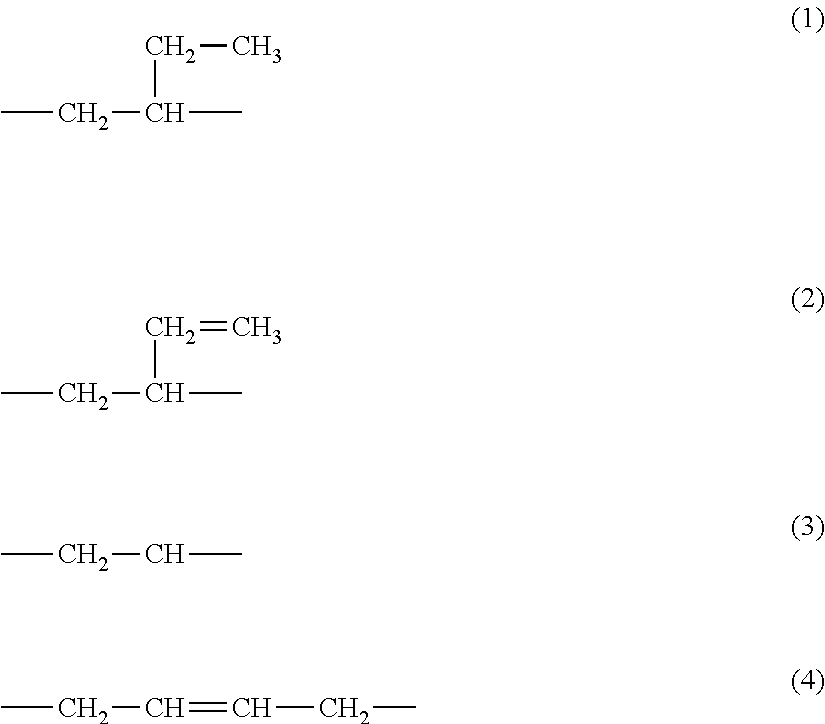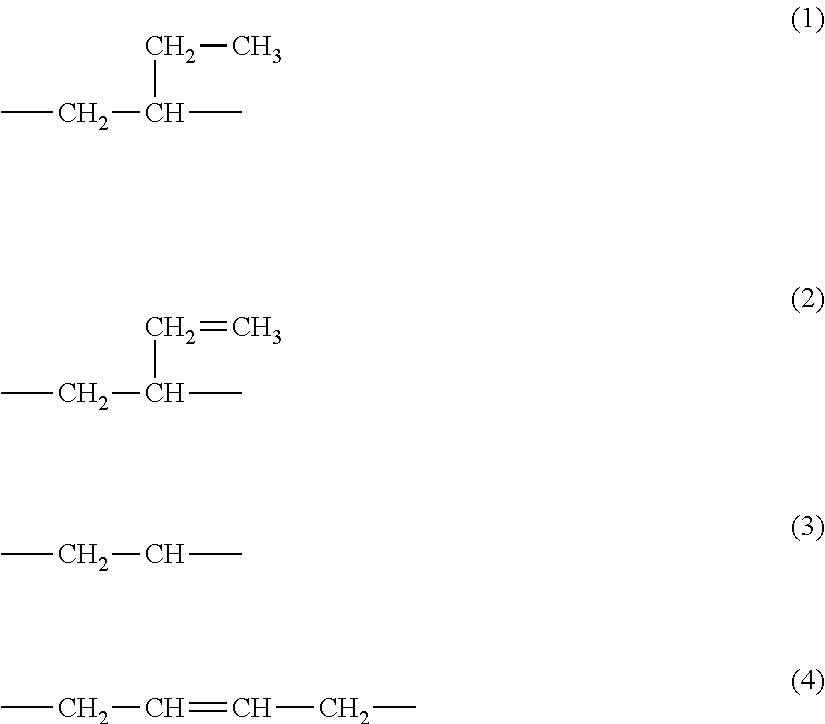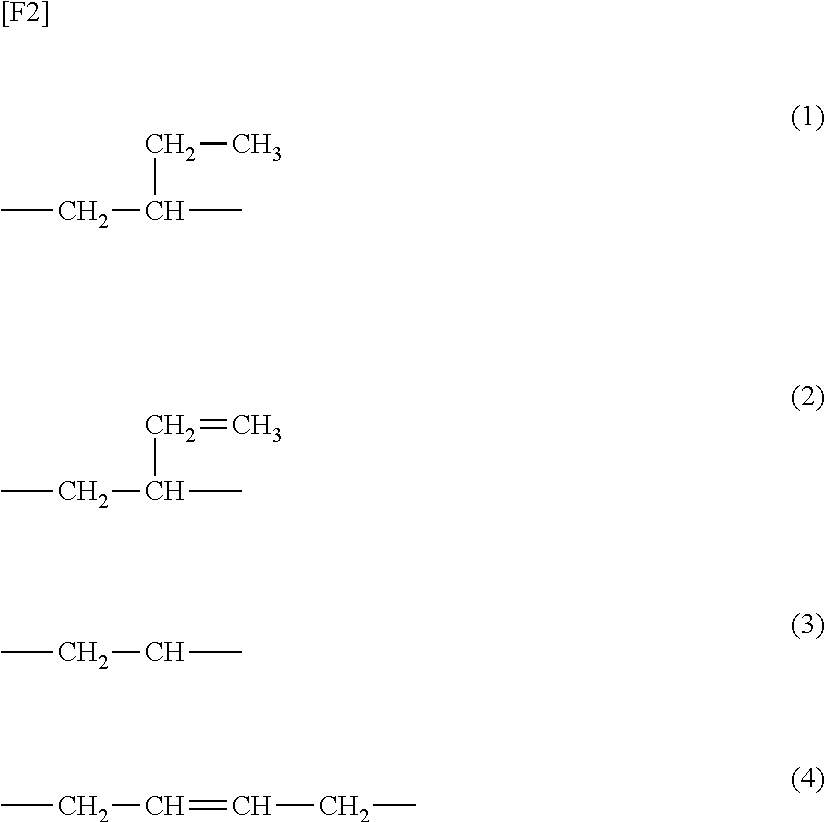Polymer composition, crosslinked body, and tire
a crosslinked body and polymer technology, applied in the field of polymer compositions and crosslinked bodies, can solve the problems of insufficient wear resistance, soft rubber obtained from vulcanized rubber, sticky rubber compositions in non-vulcanized state, etc., and achieve good grip performance on ice, good adhesion, and high strength
- Summary
- Abstract
- Description
- Claims
- Application Information
AI Technical Summary
Benefits of technology
Problems solved by technology
Method used
Image
Examples
production example 1
[0109]An autoclave reaction vessel that had been purged with nitrogen and had an internal volume of 50 liters was charged with 25900 g of cyclohexane, 26 g of tetrahydrofuran, 1273 g of styrene, and 2361 g of 1,3-butadiene. The temperature of the contents of the reaction vessel was adjusted to 45° C., and then a cyclohexane solution including n-butyllithium (39 mmol) was added to initiate polymerization. The polymerization was carried out under adiabatic conditions, and the maximum temperature reached 80° C.
[0110]After it had been confirmed that the polymerization conversion rate had reached 99%, 111 g of 1,3-butadiene was added, and polymerization was carried out for a further 5 minutes to obtain a reaction solution including a polymer. The obtained reaction solution was charged with 2 mmol of silicon tetrachloride, the reaction was carried out for 10 minutes, then 28 mmol of N,N-dimethyl-3-(triethoxysilyl)propylamine was added, and the reaction was carried out...
production example 8
[0114]An autoclave reaction vessel that had been purged with nitrogen and had an internal volume of 50 liters was charged with 25900 g of cyclohexane, 26 g of tetrahydrofuran, 1273 g of styrene, and 2361 g of 1,3-butadiene. The temperature of the contents of the reaction vessel was adjusted to 45° C., and then a cyclohexane solution including n-butyllithium (39 mmol) was added to initiate polymerization. The polymerization was carried out under adiabatic conditions, and the maximum temperature reached 80° C.
[0115]After it had been confirmed that the polymerization conversion rate had reached 99%, 111 g of butadiene was added, and polymerization was carried out for a further 5 minutes to obtain a reaction solution including a polymer. The obtained reaction solution was charged with 2 mmol of silicon tetrachloride, the reaction was carried out for 10 minutes, then 28 mmol of N,N-dimethyl-3-(triethoxysilyl)propylamine was added, and the reaction was carried out for...
PUM
| Property | Measurement | Unit |
|---|---|---|
| glass transition temperature | aaaaa | aaaaa |
| mass | aaaaa | aaaaa |
| weight average molecular weight | aaaaa | aaaaa |
Abstract
Description
Claims
Application Information
 Login to View More
Login to View More - R&D
- Intellectual Property
- Life Sciences
- Materials
- Tech Scout
- Unparalleled Data Quality
- Higher Quality Content
- 60% Fewer Hallucinations
Browse by: Latest US Patents, China's latest patents, Technical Efficacy Thesaurus, Application Domain, Technology Topic, Popular Technical Reports.
© 2025 PatSnap. All rights reserved.Legal|Privacy policy|Modern Slavery Act Transparency Statement|Sitemap|About US| Contact US: help@patsnap.com



